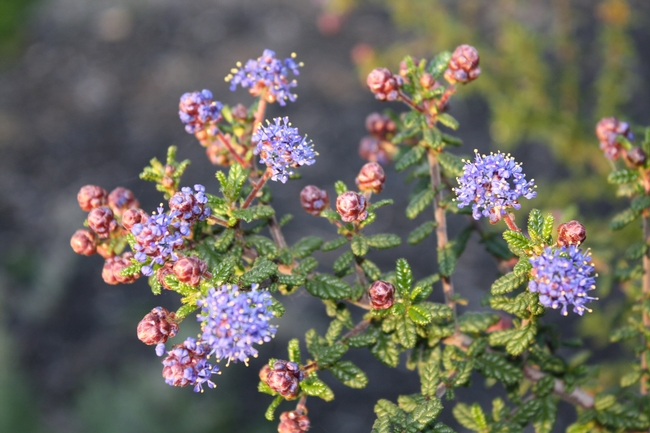Native Plants
By Nancy Hartwick UCCE Master Gardener
What are the advantages of landscaping with California native plants? Mary, Atascadero
Native plants can be quite liberating. They free the gardener of the work and expense of fertilizing and watering. Natives need no fertilizer because they work in partnership with bacteria in the soil called mycorrhizae. These partners help the plants absorb water and nutrients and fix nitrogen in the roots of some species.
Watering is required when the plants are first put in the ground. But once they are established, usually after the first year, little or no water is needed, except in times of extreme drought. Some species of plants, such as Ceanothus and Arbutus will weaken and die if overwatered.
Coastal California has a Mediterranean climate, with normal rainfall occurring from fall through spring. Summers are dry and watering established natives at this time is a definite no-no.
The gardener will have little or no use for insecticide as these plants are adapted to live with our naturally occurring insects. Forgoing insecticide may allow more beneficial insects, such as bees and butterflies to thrive in the native garden.
Soil amendments are also not recommended. Rather, choose plants according to the type of soil you have, be it sand, sandy loam or clay. You may find several types of soil on different parts of your property. So work with it, rather than against it.
Also, study the needs of the plants you want with regard to environmental factors such as sun exposure, drainage and wind. Plants that do well in the north part of the county may not thrive at the beach or in south county. Furthermore, what grows in your front yard may not thrive in the back yard due to differing microclimate conditions.
Your garden may look a little sparse in the beginning, as many of the plants are slow starters. But make note of the estimated size of the mature plants, and plan carefully to avoid crowding.
For an extensive list and descriptions of California native plants, visit laspilitas.com. There you'll find information about the plants as well as planting and maintaining your native garden.
